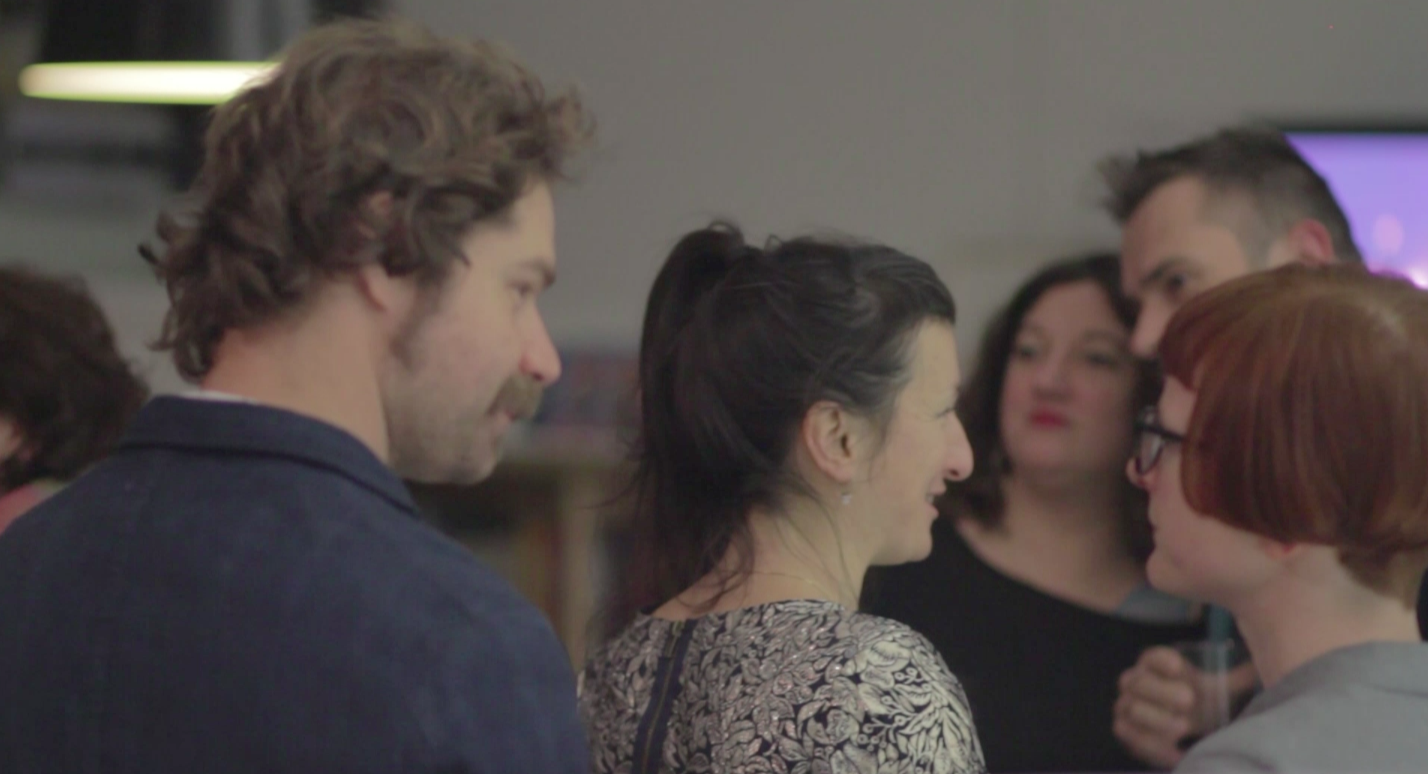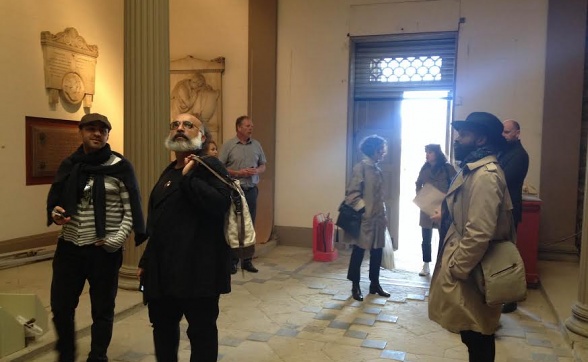From Creator to Curator
Posted on 10 February 2016
Biennial 2016 artists visiting The Oratory in Liverpool.
Jennifer Watts reflects on the top five insights she gained during her time as Curatorial Trainee in the lead-up to Liverpool Biennial 2016
When the highlight of your Fine Art degree is organising and curating the end-of-year show, you start to question which path in the ‘art world’ you really want to pursue. I joined Liverpool Biennial as a Curatorial Trainee in September last year. Looking back on the three months I spent there, I feel the phrase ‘from creator to curator’ captures the journey I have taken perfectly.
My personal experiences of making work and extensive travels around South America have helped me to understand the importance of what platforms like Liverpool Biennial offer artists. Namely, the opportunity to showcase their work internationally, but to also enrich their practice through visiting new places. For artists, being commissioned to make new work for Liverpool Biennial means they have the opportunity to realise newly commissioned projects in a city steeped in cultural history – to add their own stitch to an already colourful and detailed tapestry.
Artists visiting the city
The artists participating in each Biennial travel from all over the world, either individually or in groups, to get a taste for Liverpool in advance of the festival. For many, this is their first visit to the city. Their sense of intrigue and eagerness to wander, ask questions, and capture snapshots of the place in their own individual ways is quite apparent.
One thing I found extremely interesting was how involved the team at Liverpool Biennial is in this process. Members of the faculty organise extensive schedules for each visit and accompany the artists to specific sites. I particularly enjoyed escorting Villa Design Group around Liverpool’s fabulous theatres and their excitement about the commission was obvious from the get-go. It has been brilliant to learn about the city, whilst at the same time guiding the newcomers who will soon be creating works for it. Having the curators and faculty so involved with each artist from the initial stages is an important part of the process. It really highlighted the depth of the organisation's approach: developing a close working relationship with artists throughout.

A visit to Albert Docks with the Liverpool Biennial 2016 artists.
Year-round activity
Working for Liverpool Biennial involves much more than the preparation and execution of its biennial, 14-week festival. Over the last year, it has commissioned several new works including: Evertro, the UK's first glow-in-the-dark wheels park by Koo Jeong A x Wheelscape; Everybody Razzle Dazzle by Sir Peter Blake; and Dazzle Island, a fully usable artwork in the school playground of Childwall Sports & Science Academy. It also lays claim to many older, one-off commissions, such as Another Place by Antony Gormley at Crosby beach - the list goes on! As well as this, Liverpool Biennial produces an online journal called Stages (available to read here), and organises a number of talks, conferences and events each year.
Such regular and ongoing activity helps make Liverpool Biennial a vibrant and exciting organisation that people can connect with on a daily basis throughout the city.

Evertro in action.
Plenty of research trips
Liverpool Biennial’s curators make frequent visits to an international array of cities to carry out research into artists who may be invited to take part. During the three months I spent with the Biennial, Francesca Bertolotti-Bailey (Head of Productions and International Development) travelled to Mexico, Rosie Cooper (Head of Programmes) travelled to Asia and Sally Tallant (Director) attended the Istanbul Biennale 2015. Before my traineeship, I had maybe overlooked this aspect, and thought that artists simply submitted proposals for the curators to pick from. In actual fact, it is the curators that do the research and begin the initial conversation, meaning that they are deeply involved throughout the entire process.
The 'Biennial Buzz'
A definite highlight of working at Liverpool Biennial has been the ‘Biennial Buzz’, as I like to refer to it. Every aspect of what goes on is surrounded by such enthusiasm, and the fast pace at which the team works is an inspiring and wonderful thing to be a part of. I personally loved feeling this energy on a daily basis, working alongside such passionate, creative and excited people. Liverpool Biennial really does exist as a missing jigsaw piece within the city – its aim being to connect with the public – and I think this buzz is present throughout.
A large team at work
During each festival period there is always a large team of volunteers and staff who help keep everything running smoothly. What may be less widely known, however, is that there is also around twenty people who continue to work tirelessly throughout the two-year interval between each Biennial. The office is home to a variety of different teams, including Development, Finance, Marketing and Curatorial, which work together and independently to ensure a smooth operation. The hard work was clearly evident and my outsiders’ perspective has definitely been transformed.

The Liverpool Biennial team enjoying an evening with the 2016 artists in the Biennial offices. Photo courtesy of Rob Battersby.
Liverpool Biennial is an extremely exciting entity for the city, artists and team involved. Staging each festival demands a great deal of commitment and dedication; something I have learnt an invaluable amount from. I wish everybody the best of luck for Biennial 2016 and thank the team for the experience I have had.
Jennifer Watts
Liverpool Biennial
55 New Bird Street
Liverpool L1 0BW
- T +44 (0)151 709 7444
- info@biennial.com
Liverpool Biennial is funded by
Founding Supporter
James Moores
